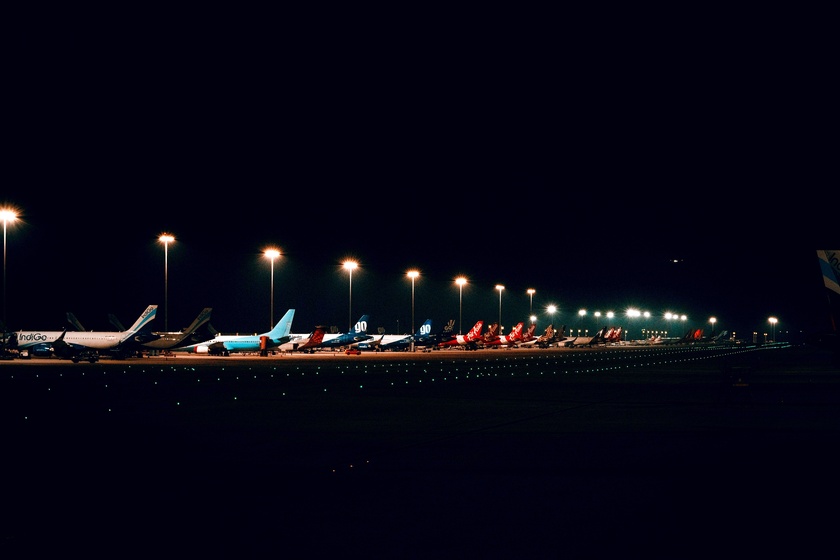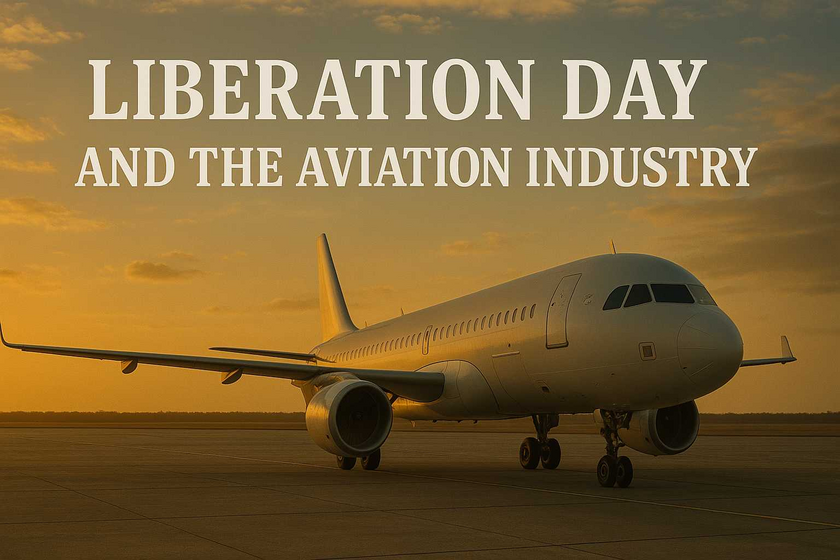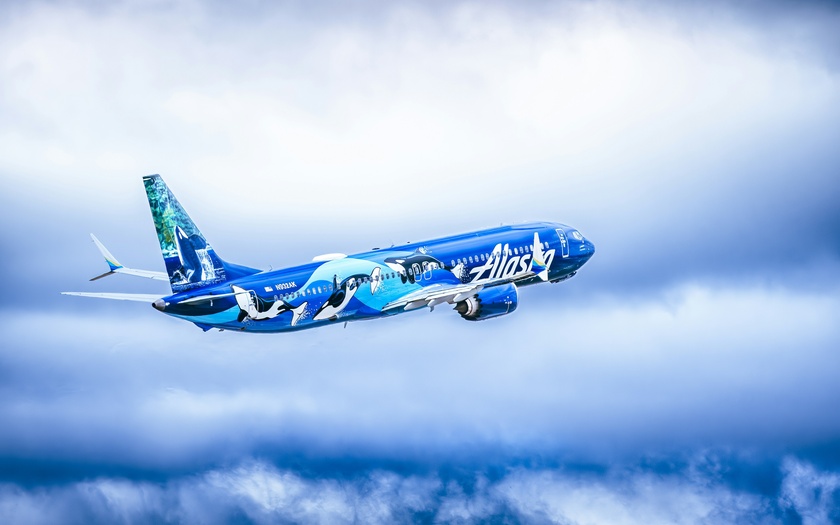
So, we are talking about sustainable aviation fuel (SAF) once more. Since the last time we discussed SAFs a couple of months ago, there have not been any significant developments. This leads many to wonder if there has been a slowdown in the developments of the NetZero alternative to traditional jet fuel. In the past, we have highlighted that the pace and level of development in SAF are dependent on the level of capital available, government subsidy or support, and the degree to which governments around the world are mandating that aviation gets greener. If any of these factors are not favorable to sustainable aviation fuels then there will be significant headwinds for the budding technology.
In this week’s On Aviation™ Digest, we share some articles on what’s been happening in the world of sustainable aviation fuel development, giving the reader some much-needed updates as to where sustainable aviation fuels are today and what the future might look like.
What Does the Introduction of Sustainable Aviation Fuel Mean for How Air Products are Distributed, Marketed and Sold?

Sustainable aviation fuel (SAF) is widely considered one of the most exciting innovations in the climate change technology space and already airlines are starting to fly passenger flights using the fuel.
But what does this mean for the distribution, marketing and sales of airline products? How should airlines using SAF – and intermediaries selling their inventory – adapt air products to appeal to B2B buyers and end travelers with this in mind? And will this start to happen soon?
We spoke to a range of experts throughout the aviation value chain to find out what they thought and discover some of the challenges our industry will face in making the much-needed transition.
Alice Ferrari from aviation technology provider Kyte agrees that SAF is becoming a reality we need to be prepared for: “The increasing availability and affordability of alternative fuels such as synthetic kerosene made from biomass or renewable electricity are major industry trends currently reshaping the airline sector towards greater sustainability. From a back-office admin, measurement and accounting perspective though this brings new challenges for airlines and the aviation technology industry needs to respond to that need quickly. There’s potentially a revenue management opportunity here too, charging people extra to pay for their share of the SAF flying the plane and with NDC it will be easier to give consumers that option to make this conscious choice – even if they aren’t booking directly via an airline’s website or mobile app”.
By Aviation Pros
Virgin Atlantic, Rolls-Royce Test Sustainable Aviation Fuel

Virgin Atlantic and Rolls-Royce said they successfully completed a ground test of a sustainable aviation fuel blend on the Rolls-Royce Trent 1000 airplane engine, which the companies plan to use on a transatlantic flight.
The SAF is produced through the Hydroprocessed Esters and Fatty Acids pathway as well as synthetic aromatic kerosene (SAK) SAF at an 88% and 12% blend ratio. The test moves the two companies forward in their goal to see the first 100% SAF flight travel from Atlanta to London Heathrow to New York JFK on a Boeing 787 Dreamliner, which uses the Rolls-Royce Trent 1000 engine. That flight is set to take off Nov. 28, 2023.
The test is also a milestone for the aviation industry overall, as SAF has the potential to significantly reduce emissions compared to traditional jet fuel. In fact, CO2 lifecycle emissions of SAF are typically more than 70% less that jet fuel.
Currently, SAF is not integrated into the airline industry, representing less than 0.1% of jet fuel volumes. Additionally, fuel standards allow for 50% SAF blend in commercial jet engines.
By Amy Baxter | Environment + Energy Leader
Aviation fuel production needs policy to grow, diversify sources – IATA

The International Air Transport Association (IATA) has announced its expectation for overall renewable fuel production to reach an estimated capacity of at least 69 billion liters (55 million tonnes) by 2028.
Sustainable Aviation Fuels (SAF) will comprise a portion of this growing output which is being achieved through new renewable fuel refineries and the expansion of existing facilities. Importantly, the expected production has a wide geographic footprint covering North America, Europe and Asia Pacific.
“The expected production increase is extremely encouraging. Seeing this, we need governments to act to ensure that SAF gets its fair production share. That means, in the first instance, production incentives, to support aviation’s energy transition. And we need continued approval for more diversification of methods and feedstocks available for SAF production.
“With these two measures successfully in place, we can be confident that the expected 2028 production levels will be realistically aligned with our recently published roadmaps to net zero carbon emissions by 2050. That is important as we are counting on SAF to provide about 62 percent of the carbon mitigation needed in 2050,” Willie Walsh, IATA’s Director General said.
By Ifeoma Okeke-Korieocha | Business Day
Gevo and McDermott to Collaborate on Sustainable Aviation Fuel Facilities

HOUSTON, July 24, 2023 /PRNewswire/ -- McDermott has secured a master services agreement (MSA) from Gevo, Inc., to provide front end engineering and early planning services for Gevo's development of multiple sustainable aviation fuel facilities in North America. The first facility, Net-Zero 1, is expected to be constructed near Lake Preston, South Dakota. The Net-Zero 1 plant is expected to produce up to 65 million gallons of sustainable aviation fuel (SAF), diesel and renewable gasoline that, when consumed, is expected to have a lifecycle net-zero greenhouse gas footprint.
"Gevo is a premier provider in the fast-growing sustainable aviation fuel market. This agreement marks the commencement of a collaborative relationship through which we will support Gevo's low-cost delivery and speed-to-market goals for Gevo's novel alcohol-to-jet process design which incorporates Axen's ethanol-to-jet process," said Vaseem Khan, Senior Vice President of McDermott. "We believe we have the experience and expertise to deliver a standardized, modularized, and repeatable design for this and Gevo's future Net-Zero projects."
Under the scope of the MSA, McDermott will provide engineering, execution planning and pricing for the engineering, procurement, and construction (EPC) phase of Gevo's Net-Zero 1 project. The MSA is expected to lead to a final EPC agreement with Gevo for its Net-Zero 1 project to be finalized in coordination with the timing of Gevo's financing activities for its Net-Zero 1 project.
By PR Newswire | Yahoo Finance
Note: The views and opinions expressed in the content shared in this digest are for informational purposes only, are solely those of the original content creators, and do not constitute an endorsement by or necessarily represent the views of On Aviation™ or its affiliates.
Thank you for reading this week's On Aviation™ digest. Do you think sustainable aviation fuel is seeing significant developments and making significant strides? Or do you believe that most of these developments are a lot of talk with not much tangible output to show? Please share your thoughts in the comments below. Remember to check out our On Aviation™ Podcast and continue the conversation on our Twitter and Instagram.
Orlando - On Aviation™

















